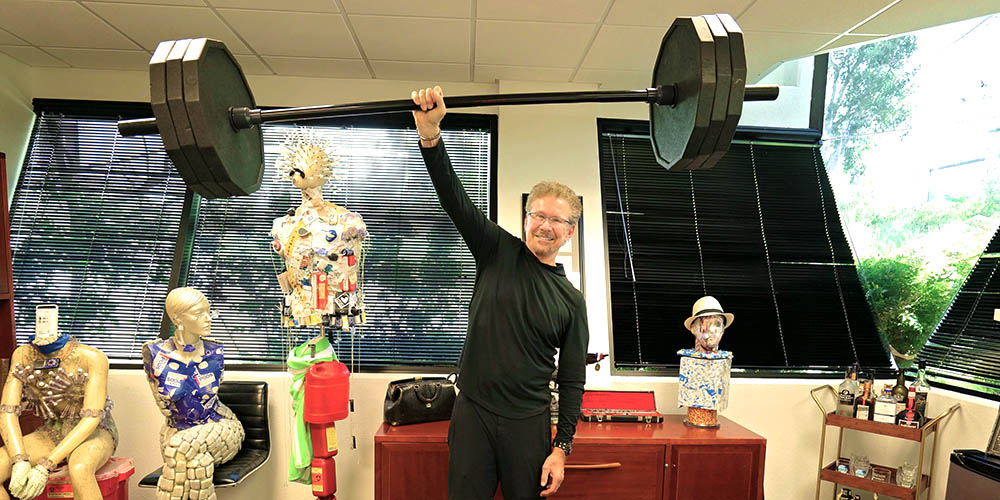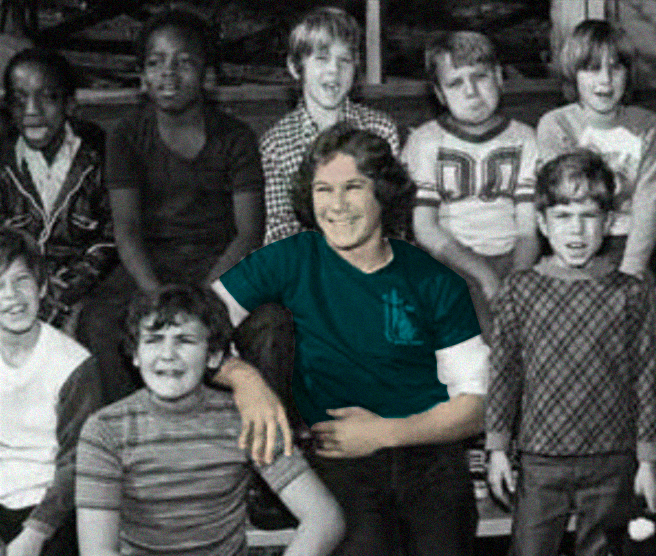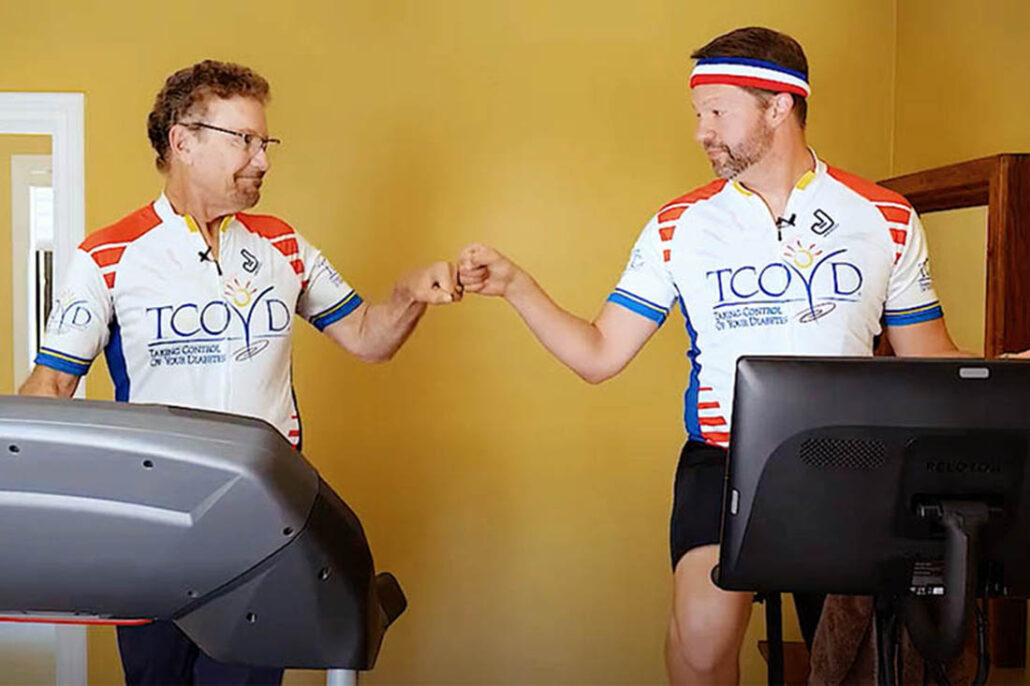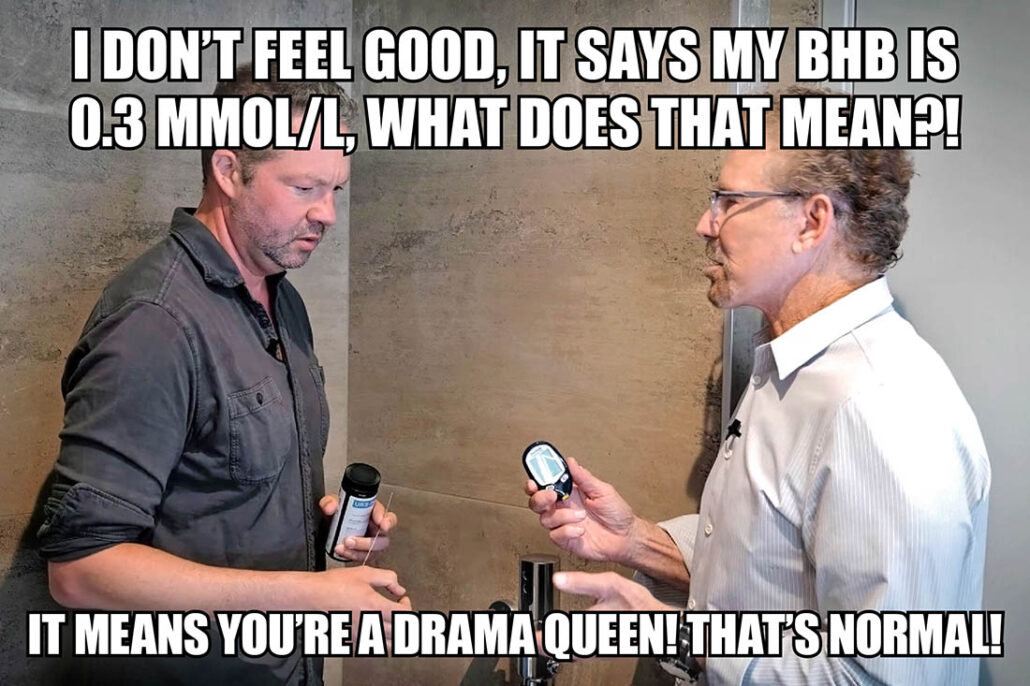
Reading Time: 4 minutes
For Diabetes Awareness Month, we wanted to focus on something positive and share insights on how you can live well with diabetes for decades, even if you were diagnosed in the dark ages like me.
Whether you’re brand new to diabetes or have lived with it as long as I have, I want you to know you’re in good company, and definitely not alone. The aim here is not just to reminisce about how far things have come, but to let you know what’s possible when living with diabetes.
Meet the Patient: Me!

I’m Steve, a stunningly handsome and buff 70-year-old man who was diagnosed with type 1 diabetes in 1970 when I was 15 years old. Even though 1970 doesn’t seem that long ago to many of us, it really was the dark ages for people living with diabetes.
Surviving Life with Type 1 in the Dark Ages of Diabetes

In 1970, the standard treatment for people with type 1 diabetes was one shot a day of NPH and regular insulin, and the effects of the insulin wouldn’t even last 24 hours. Imagine charging your phone in the morning and having your battery die by dinner – that’s kind of how it was.
By the way, this was the same treatment regimen that was used in 1922 when insulin was invented – there hadn’t been ANY updates for 50 years!
There was also no way of really knowing what your blood sugar levels were back then. Urine testing was all we had, but it only gave you a general idea of the concentration of glucose that had been in your blood three hours before you tested. I kept notes in a urine test log book (and recorded things like plus 1, plus 2, plus 3, plus 4 – no actual numbers), but it was always too wet to bring to my doctor!
I’ll be honest, living with diabetes and trying to manage it back then was really hard. When your urine test turned black it meant you were super high, but you had no idea how high. I did the best I could, and just tried to avoid extreme highs and hypos as much as possible.
The First Major Turning Points: Glucose Monitoring, New Insulins, and CGM

The 1980s brought the first real advancement in diabetes…home blood glucose meters. For the first time, I could actually see what my blood sugar was doing in real time instead of relying on color-coded pee strips. Revolutionary!
Even still, we had to put a large drop of blood on a test strip, wait for one minute, wipe the blood off, then wait another minute to read the value.
The 1990s and early 2000s introduced new insulin formulations–fast-acting insulins (Humalog and Novolog) and long-acting insulins (Lantus and Levemir). My control got better, but my A1c was still around 8%.
Then came the greatest advancement in diabetes since the discovery of insulin nearly 100 years earlier–the development of continuous glucose monitoring. In 2006, I was the first person on the Dexcom 3-Day STS Short-Term sensor. It was pretty mind-blowing technology at the time, and really made a huge difference in how I was able to see what was affecting my blood sugars – and with trend arrows, which way they were going.
The last 15 years have seen the greatest leaps in therapeutic breakthroughs, with innovations in insulin (Tresiba, Toujeo, Lyumjev, Fiasp, and inhaled insulin Afrezza), communication between CGM sensors and insulin pumps, and automated insulin delivery systems.
My time in range over the last 10 years has averaged between 75- 85%, and it’s been more consistently in the 85-95% range since I started looping a few years ago.
What’s the Point of All That History?
I wanted to share all of this for two important reasons:
- We’ve come so far in diabetes care. Things have been moving at lightening speed the last 10 years alone, after nothing at all for almost 50 years.
- Even if you were diagnosed in the dark ages like me, you can still do incredibly well, and living with diabetes has never been easier. I do have some complications, but overall I’m doing great.
What’s the Secret of My Success?

Was I perfect with my diabetes management from day one? No. Far from it, but we didn’t have the tools back then that we do now. Even still, I’ve always taken responsibility for my own health, stayed active, seen my doctors regularly, and stayed up-to-date with the latest advancements and medications.
I don’t drive myself crazy watching what I eat – I eat what I like in moderation. I’ve never been a big breakfast eater (I was intermittent fasting before it was cool) and I try to eat low carb-ish most of the time, but I’m not going to cut out my favorite cereal (Trix!), deny myself my favorite pasta dish when I go out to eat with my girlfriend, or give up donuts completely. Technology can make indulgences a little smoother, along with inhaled insulin Afrezza, which can help curb spikes.
I follow the diabetes warranty program I started years ago, and I take the medications recommended for me – Rapatha and Nexletol for cholesterol, Monopril for blood pressure, Farxiga for kidney support, low-dose aspirin for heart support, and daily Cialis for my BPH…and other things 😉. Don’t be afraid of medication and don’t believe everything you read online…except for this!
My Diabetes Awareness Month Message to You
The message I want to get across to you is this: you don’t have to be a doctor to stay up to date on the latest diabetes news and advancements, or to take control of your health.
Here are my top 5 tips to take control of your diabetes:
- Learn all you can about diabetes – knowledge is power. There are hundreds of videos, podcasts, and articles on the TCOYD® website alone, and it’s all free.
- Be proactive in your care. Get on a diabetes warranty program and stick with it.
- Be your own self-advocate. Stay up-to-date on the latest advances, know what could benefit you, and push for what you need.
- Be smart and be persistent.
- Keep a positive attitude, and be kind to yourself when living with diabetes doesn’t go as planned – there are over 40 different things that can affect blood sugar.
These principals became the foundation for Taking Control of Your Diabetes® when I started it in 1995…the name says it all.
Remember that taking control of your diabetes is a marathon, not a sprint. Everyone will have bad blood sugar days. I still do, and I’ve been at it for 55 years and I am a diabetes specialist. Don’t beat yourself up about it – just move forward.
The Future of Diabetes Care
We’re on the verge of some really important innovations, including:
- GLP-1s and SGLT2s for people with type 1 diabetes, which will give them the opportunity to have the benefits of weight loss and heart, kidney, and liver protection.
- Continuous ketone monitoring integrated with CGMs, which will be beneficial for people with type 1 diabetes and people with type 2 diabetes, especially those on SGLT2 inhibitors
- A once-weekly basal insulin for type 2 diabetes (currently awaiting FDA review)
- Triple agonists, which mimic the action of three key gut hormones that regulate metabolism (GLP-1, GIP, and glucagon)
- An oral GLP-1 medication that you can take without fasting or having to wait 30 minutes to eat or drink after you take it
And then of course there’s the mac daddy of advancements on the horizon… a cure for type 1 diabetes in the form of islet cell transplantation and/or gene therapy, which I predict will happen in the next decade.
When that day comes and diabetes endocrinologists are out of work, I’m hopping a plane to Hawaii to become a barista at the Waikiki Starbucks and/or a bartender making old fashions on the beach!
Living with Diabetes: Key Takeaways
When I was first diagnosed with diabetes, my doctor told my mom I’d have 20 years to live. If that doctor were still alive today, I would have invited him to my 70th birthday party!

Recent studies have shown that people with diabetes can now live long, healthy lives, and sometimes longer than those losers without diabetes!
A peer-reviewed study from the National Diabetes Registry in Bulgaria (published in 2020) analyzed life expectancy data for people with type 1 diabetes, type 2 diabetes, and the non-diabetic population over several years. The study found that in 2015, diabetic men as a group were expected to live 0.2 years longer than non-diabetic men.
Technology gets smarter every year and medications keep getting better, improving diabetes management and overall quality of life. Even drugs like Cialis have been game-changers. Back in the day, if a man had ED, he just had to suffer in silence…with his partner. Now? Let’s just say, things are looking up. 😉
Diabetes management has changed so dramatically in the past two decades that it’s almost hard to remember what living with diabetes was like back in the dark ages. I say this all the time, and I’ll say it again – there’s never been a better time to have diabetes.
I’m a perfect example. Here I am 70 years old, 55 years living with type 1 diabetes. I do have some complications, but I have good doctors and great treatments, and I’m hanging in there. And I bet I can ride my bike farther than you!
And what are the two things I never leave home without?
A positive attitude and a sense of humor…they’ve helped get me where I am today, and they make life with diabetes more enjoyable. And if you can’t force yourself to have a positive attitude, at least have a sense of humor about it!
Explore our resource library and video vault, and subscribe to our monthly digital newsletter for tips, tools, and expert guidance on how to take control of your diabetes.


Our goal is to protect your personal health information. Please keep your questions general and do not post personal medical information here. If you have a specific question, please email events@tcoyd.org.
Thank you, Steve, for sharing your stor. You continually motivate and inspire long term diabetics to live better and stronger and to defy the odds given to us in the 70s. Being on the front lines, do you believe this is truly the “within 5 years” we will see a cure? My hopes are high and my prayers go even higher!
YES, and Vertex is in the forefront. There will be a need for low-dose immunosuppressants at first for the islet cell transplantation.
T1D since June 18, 1976, when I was 19, and it was called Diabetes Mellitus. Advancements in this disease have taken many forms. From insulin management to blood glucose management.
One thing happening with new management drugs is the appearance of roadblocks towards those with T1D. We need to make this a priority soon!!!
A.C.E.
We do think things will be heading in that direction soon…fingers crossed!
I was diagnosed on February 14, 1964 at age 1! The bad parts I remember was waking up with hypoglycemia and being sick for hours. (I don’t know why.)
Congratulations on 60+ years!
Congrats and thanks for sharing so many positive developments and your great attitude. Thanks to everyone at TCOYD for leading the way! My 40th anniversary of T1D is in just a few weeks, and I’m happy to include your input as a factor in my care.
That’s awesome! Thank you for your kind words, and congrats on 40 years!!
Thank you for openly sharing your adventures with diabetes. I was diagnosed as a borderline diabetic in 1968 and became insulin dependent in 1972. Listening to you speak of the early years is very emotional and important to me. I re experience those times again but with an understanding of how accomplished and fortunate I am to still be here today. The best advice my mother was given in those early years was “she doesn’t have a disease, your family has a new lifestyle to create.”. Please understand that I have stories of misadventures, challenges and tiredness but I am proud of my hard work and the life I have created. Your words have reminded me that, thank you..
Keep up the extraordinary work, it is making a difference.
Thank you for your kind words, and for sharing the advice given to your mom. And you should be proud of everything you have accomplished…diabetes is HARD!
Dr. Edelman,
Congratulations on your 70th birthday!
I believe your outstanding dedication to the diabetes community has made — and will continue to make — countless lives healthier and happier for decades to come.
I am the owner of Jay’s Drug, and for the past 43 years I have been educating the Korean-American community about diabetes care. I am not diabetic myself, but my uncle, who was my mentor in my youth, passed away from diabetes at the age of 40. In his memory, I treat every diabetes patient as if they were my own uncle.
I sincerely hope all people living with diabetes stay well until the day a true cure arrives.
Thank you again for your tireless dedication and compassion.
Warm regards,
Jae Shin, R.Ph.
Los Angeles
Thanks so much for your note and for your dedication to people with diabetes. Treating them all like they are your relatives is such a great thing.
I, too, was diagnosed in 1972 and approach each day like you, with a positive attitude and a sense of humor. My living with T1D has been made so much easier since I discovered TCOYD about 20 years ago when you came to Sacramento for an Eye-opening weekend! I’ve been using a pump continuously since 1982, one of the first to go through childbirth using an insulin pump. That was in Southern California in April, 1983. Thank you for all you do in support of the T1D community! You guys are my heroes!
Awwww you are so sweet! Thanks for the great note, and for being part of the TCOYD community since the early days! You are a pump trailblazer for sure! 👍 👏 💪